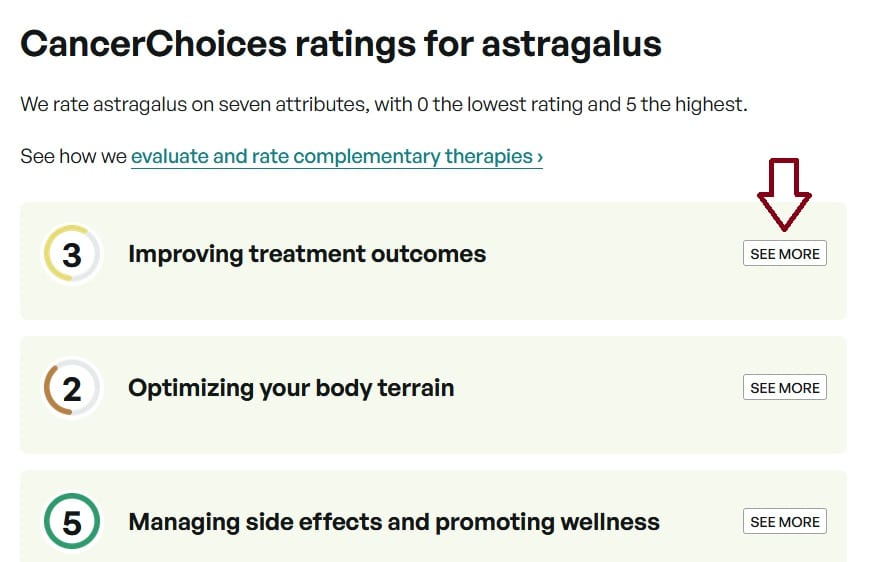We appreciate that you would like to be able to select more than one filter for complementary therapies. You might want to select both top therapies for improving treatment outcomes AND therapies beneficial for breast cancer, for instance. You want the list of top therapies for improving treatment outcomes with breast cancer.
But currently our technology doesn’t allow this level of detail. To explain, consider this analogy:
Imagine a collection of athletes, and you’re a sports writer assigned to get interviews. You have access to a database identifying athletes on various aspects: top-rating, which sports, and so on.
Now imagine that we have Miriam, a top-rated tennis player. She also swims and plays basketball, but is not top-rated in these two sports—only in tennis.
If you searched the database for all athletes who are top-rated and who swim, you might think you’d be getting all the top-rated swimmers. But Miriam would show up on your list, as she’s both top-rated and she swims. If you’re hoping to interview a top-rated swimmer, you’ll be disappointed with Miriam.
We have a similar situation with our collection of complementary therapies. If you were to search for top therapies for improving treatment outcomes AND therapies beneficial for breast cancer, you would get results including therapies that are top-rated for improving outcomes with some other type of cancer AND that show benefit for improving outcomes with breast cancer but are NOT top-rated for improving outcomes with breast cancer.
We don’t want you to assume you’re getting the top therapies for improving treatment outcomes for breast cancer, so we have limited you to one filter at a time. We’re doing the best we can to provide you accurate information and don’t want to mislead you.
The first page you’ll see when you open a therapy review, such as Astragalus, is a summary of information and our ratings for that therapy. You can quickly scan through the rating descriptions (open the SEE MORE links for ratings of interest to you, as shown in the screenshot below) to see which cancer types, which terrain factors, or which symptoms have been researched and the findings.

We’ve worked to present a huge amount of information in a way that will be helpful and meaningful to you without sacrificing accuracy. We’re continuing to evaluate how we do this and how we might improve.
